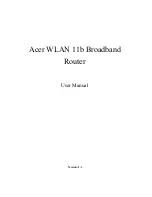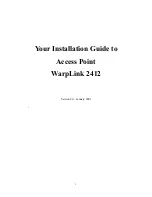
34
| Understanding Antennas
Aruba AP-85 Outdoor Access Point Series
| Installation Guide
Antenna Beamwidth, Pattern, and Gain Considerations
Antenna gain is a relative measure of how the antenna compares to an ideal isotropic radiator. An ideal, isotropic radiator
would radiate power in all directions equally over a sphere. The relationship between gain, power, and propagation distance
is detailed already in textbooks and Wiki's, so these expressions are not repeated here. Antenna gain is often confused with
power gain in amplifiers, but it is important to note that antenna gain only makes a transmitter's power appear to be higher
than would be predicted by calculation of the power fed to the antenna and then spread equally over a sphere. Antenna gain
itself is a completely passive and bi-directional property, determined only by the shape and construction of the antenna.
Knowing that gain is only a comparison of the apparent power to the power that would be required if fed to an ideal isotropic
antenna, you realize that gain can only be created by distorting the antenna pattern from the ideal spherical pattern. Think of
this as focusing the same power that would normally distribute evenly over a sphere into a tighter region of space. Thus, the
higher the gain, the more concentrated (in some way) the antenna pattern must be in order to achieve that gain.
Example
To visualize the concept of gain, picture a rubber ball. The surface area of the ball represents the total available power
radiated by an ideal isotropic antenna over its sphere of radiation (see
Figure 24
).
Figure 24
Equal Signal Strength Radiated in All Directions
Equal Signal Strength
Radiated over a Sphere
Содержание AP-85
Страница 1: ...Aruba AP 85 Outdoor Access Point Series Installation Guide...
Страница 20: ...20 Outdoor Planning and Deployment Considerations Aruba AP 85 Outdoor Access Point Series Installation Guide...
Страница 42: ...42 Understanding Antennas Aruba AP 85 Outdoor Access Point Series Installation Guide...
















































